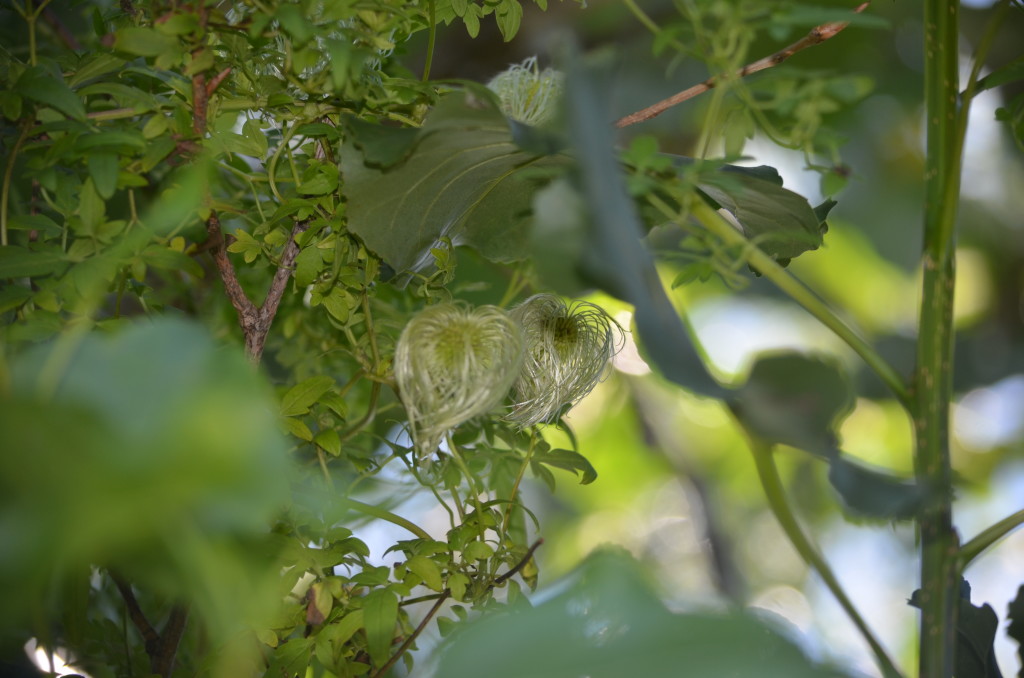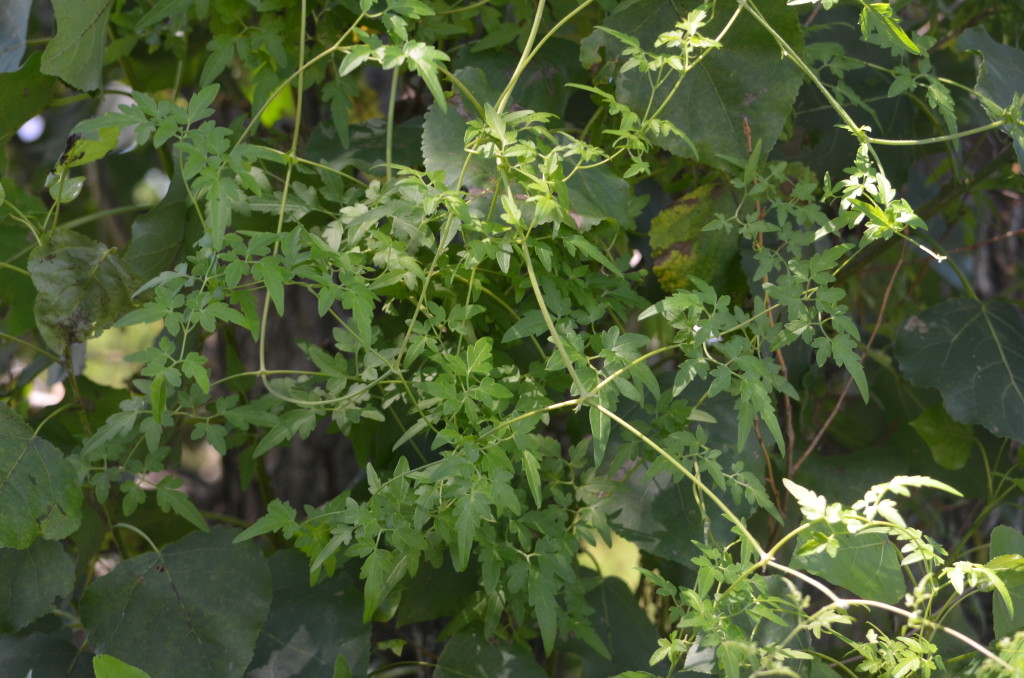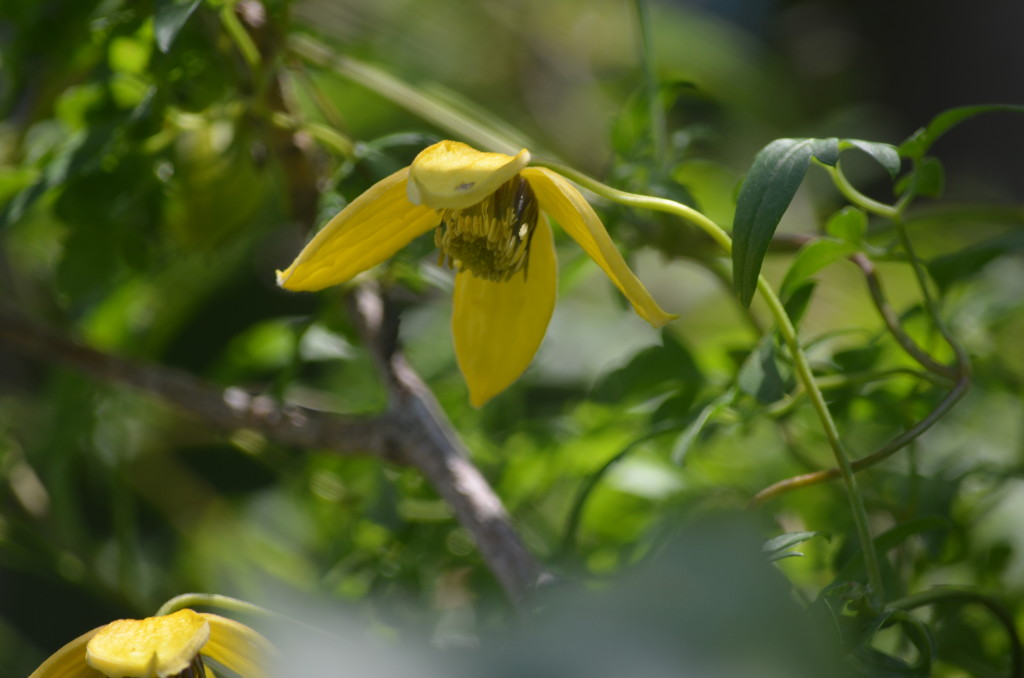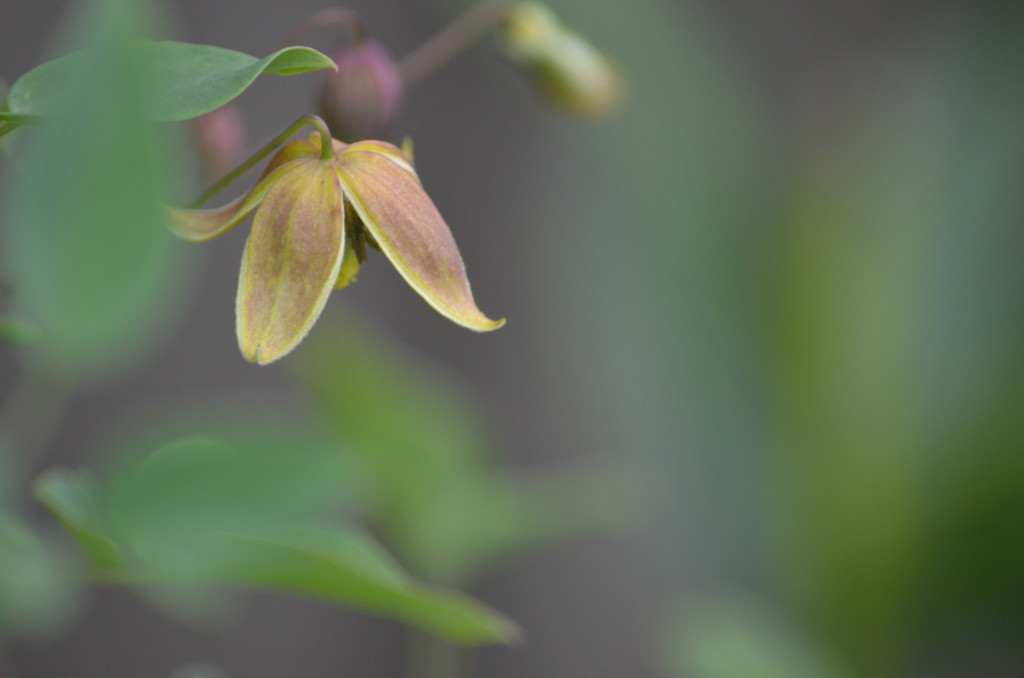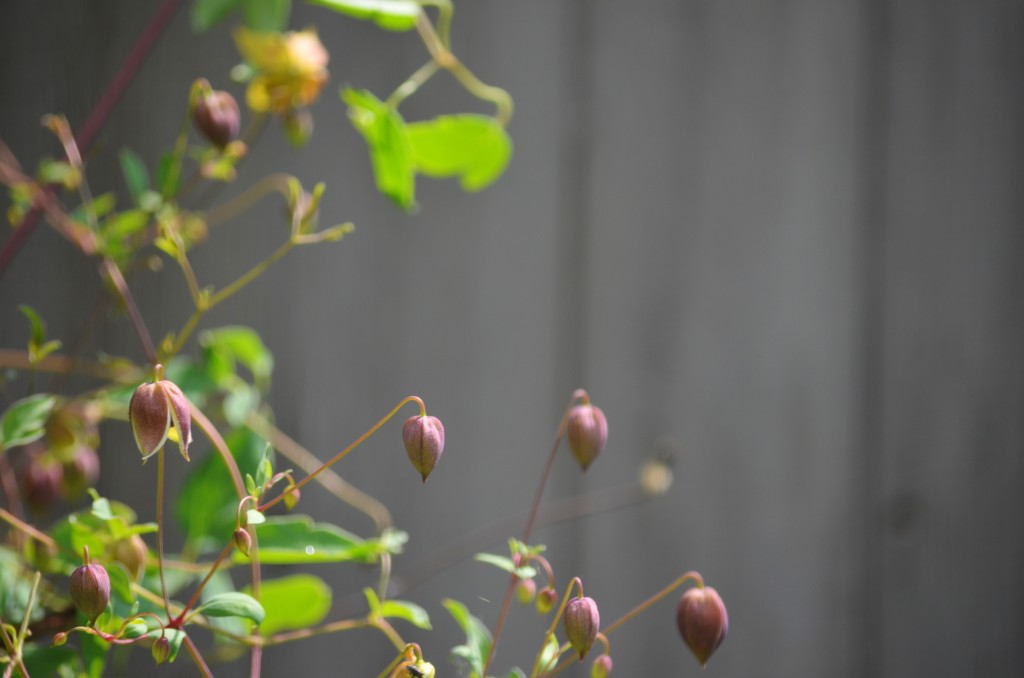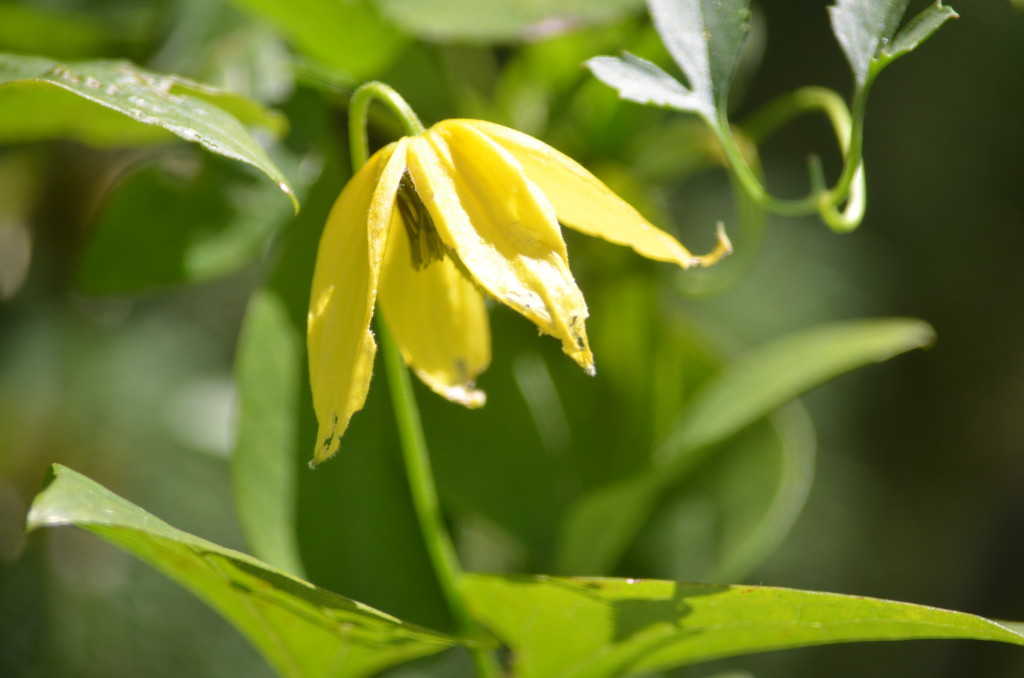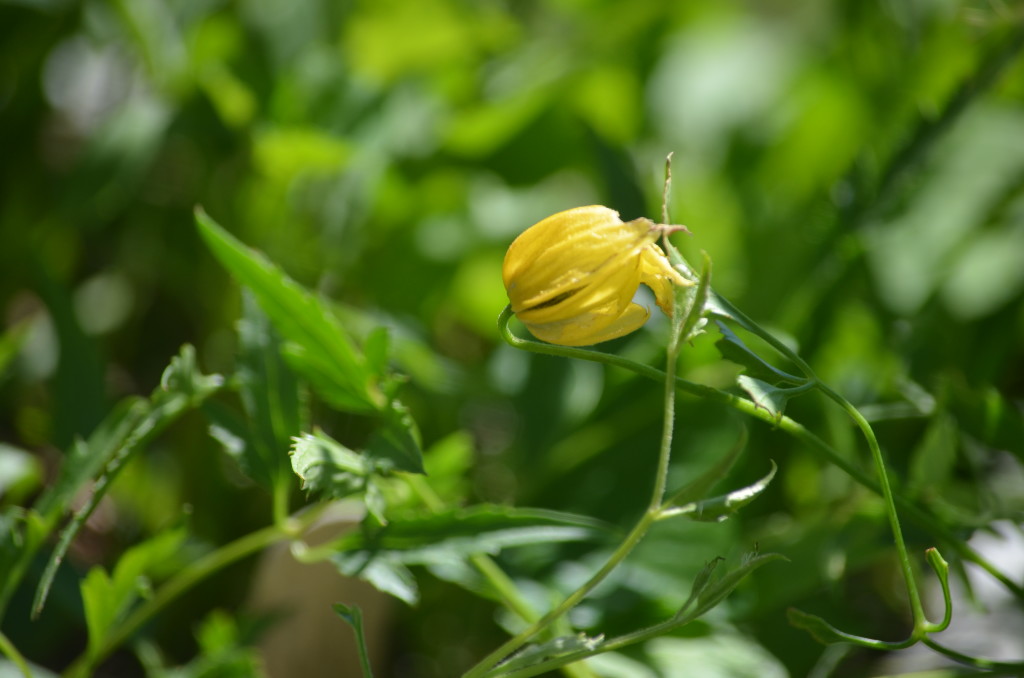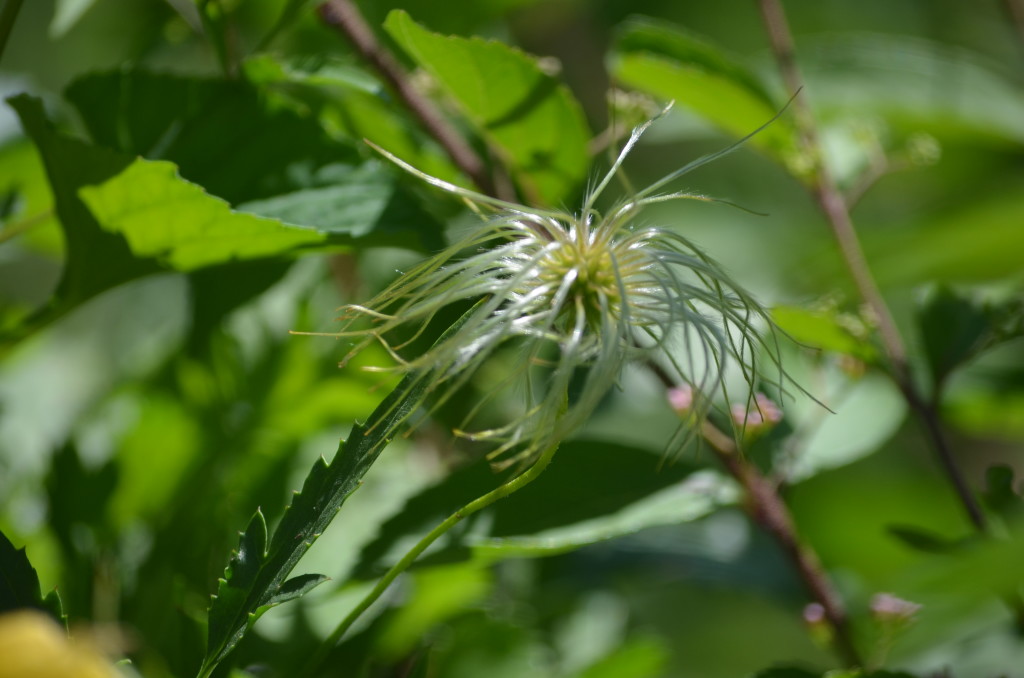I hear from many people at my talks that they find clematis to be tricky, fussy , or even impossible to grow. that may very well be true for some of the large flowered hybrids with their susceptibility to wilt and siren call they send out to every slug from here to Nova Scotia, but the more you know about this fascinating genus of plants the better able you are to pick and choose the ones that flower generously and remain more or less trouble free in the garden .
For the next couple of weeks i am going to introduce you to some clematis that are as easy as pie to grow and maintain , and also bring some charm into the garden.
First a little background info. The genus clematis has quite a number of differing species , and these species hail from all over the globe and can be markedly different in their growth and growing requirements. One way growers use to simplify the what and how of each species and their hybrids is to lump them into loose groups based on parentage.
The four groups I am going to talk about are all full of late season bloomers, with generally smaller flowers massed on larger vines , they are the Tangutica group, the Heracleifolia Group, the Viorna Group and the Vitacella Group. One a week for four weeks, follow along!!!
This week we start with the Tanguitica group and three of the easiest clematis varieties you will ever grow.
The Tanguita group holds clematis that have either c.tanguitica, c. orientalis, c.serratifolia, or c. tibetana as a parent, it is sometimes also called the Orientalis group. Many clematis in this group have yellow or orange-y yellow flowers, but also white, cream or even those that look brown, or some that are bi-colored. The clematis in this group also sport some pretty amazing seed heads and many of the vines can grow large enough to cover a shed or pergola.
C.tangutica ‘Bill MacKenzie’ was the first one I ever grew from this group. It can reach 25+ feet and has lovely foliage which never looks ratty because it is very adapted to living in poor sandy soils and is quite tolerant of drought .I t will sulk in heavy or poorly drained soil so add grit and gravel if necessary in your neck of the woods. I have planted Bill under the one ( out of 20) remaining poplar trees in the yard where it happily has grown into the canopy of the tree and flowers from June to September. After the first few flower pass (usually in July) the vine starts to also show off the gorgeous large silky seed heads that persist until early winter . I press the foliage of this guy a lot for my Pressed Flower card workshops, it is quite fine, almost ferny.
This clematis blooms only growth it makes in the current year, so you could in fact cut it down to 12 inches or so in the late winter, but I chose to cut only a few vines back, and to staggered heights at that, to maintain some of the height into the tree and get flowers at many levels.
Clematis ‘My Angel’ is also a very vigorous plant and quite the charmer. I bought mine from Klehm’s Song Sparrow and am copying their description here because it is perfect (photos are mine)
Charming flowers are yellow on the inside and brushed with plum-red on the outside. Clematis My Angel® has plump, round buds that open to nodding flowers over a long bloom period. Each bloom has four showy tepals and is accented with a center of dark plum anthers. Flowers give way to fluffy silvery, seed heads.
The only thing I will add is that my flowers tend to be the size of a dime , they are beyond adorable.
I word of caution, I have heard this baby will seed itself , but usually near the mama plant. haven’t had it happen here but good to know.
The third member of this group I am growing is new to me this year, and seriously, if you can’t grow this one you should maybe take up a new hobby.
‘Radar Love ‘ had solid yellow open bells and gorgeous seed heads, how do I know this so soon? Started from seed in April, my plants are already blooming and one has seeds too. 4 months from seed to blooming vine, and mind you, I had almost 100% germination rate so I actually ran out of locations to put them in the garden and I left some in pots where they have been deliriously happy .
Doesn’t get easier than this, well, except maybe next week’s group, The Heracleifolias!
